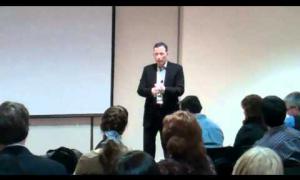“Never Man Spake Like This Man”
October 20, 2013
Christ as orator: According to 1893 book, we're all His disciples
Published in 1893, Thomas Alexander Hyde’s Christ the Orator holds up the carpenter from Nazareth as a public speaking role-model—for all time.
Christ faced many of the same traps that speakers have probably always had to wrestle with—and Hyde describes a few of these. There is the temptation to cover your speaking points in dense logic and confusing abstractions, sacrificing clarity of expression to make yourself sound profound. One might also lean on established authorities to justify one’s statements on an issue, without offering much original thought. There is also the danger of losing an audience while “painfully repeating” an obviously-memorized script.
How did Christ avoid these public speaking pitfalls? His memorable figures of speech, often involving ordinary items of day-to-day life (salt, wine, mustard seeds, candles, bread, eggs, etc.), were perhaps His most formidable tool in this regard.
As Hyde puts it: “Each and all of His discourses have so many illustrations, and so brilliant are they, that they seem like stars in a firmament of thought. Those bright gems of imagination and originality rendered this Great Orator's speech not only luminous, but overwhelmingly persuasive. It is a very difficult task to shut the mind and heart against a beautiful image of truth. Like pictures that flash a world of objects upon the eye at once, so that what would take hours to present in detail is seen at a glance, so illustrations flash a multitude of thoughts instantaneously upon the mind.”
And when a more poetic approach was called for, such as during the Sermon on the Mount, Christ adapted His style of speaking to the occasion. Hyde again: “Though Jesus always maintained a certain elevation and solemnity of tone throughout His discourse, yet He was never stilted or artificial. That awful gravity which fears a ripple on the stream of human playfulness, or a rill of homely illustration, or the smiling face of wit and humor, derives no authority from His style of eloquence. He spoke as His feelings moved Him, and made use of any illustration, simple or elevated, that rose before His eyes, or in His mind.”
If I were to try to summarize Hyde’s book in one line, it might be: A speaker must engage the audience’s intellect, imagination, heart and will to achieve a meaningful connection, as Christ did.
Or, to humbly paraphrase the subject of Hyde’s tome—man does not live by bread alone, and neither does a speaker connect with an audience through intellect alone.




